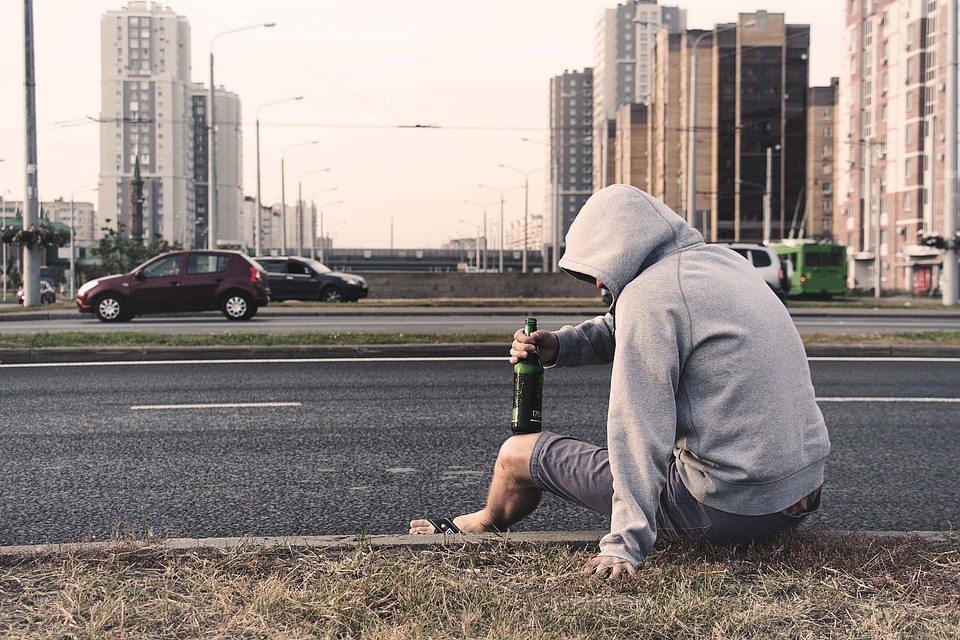
DANGERS > PEDESTRIANS > DRUNKS
Drunks
☠️ Alert:
💡 Tips:
? Questions:

☠️ Drunk pedestrian behavior
Unsteady or Stumbling Walk: Alcohol can affect a person's balance and coordination, leading to an unsteady gait or stumbling while walking. Drunk pedestrians may have difficulty maintaining a straight path or may sway from side to side. Slurred Speech: Intoxication can impair speech, causing drunk pedestrians to speak incoherently or with slurred words. Their speech may be difficult to understand or may lack clarity. Lack of Awareness: Drunk pedestrians may display a diminished level of awareness of their surroundings. They may be less attentive to traffic signals, road hazards, or other pedestrians, making them more susceptible to accidents. Impaired Judgment: Alcohol can impair judgment and decision-making abilities. Drunk pedestrians may take unnecessary risks, such as jaywalking, crossing against traffic lights, or attempting to cross busy roads without caution. Unpredictable Behavior: Intoxicated individuals may exhibit unpredictable behavior. They may suddenly change directions, stop abruptly, or engage in erratic movements, making it challenging to anticipate their actions. Poor Reaction Time: Alcohol can slow down reaction time and impair reflexes. Drunk pedestrians may not react promptly to potential dangers, such as approaching vehicles or uneven surfaces. Aggression or Irritability: In some cases, alcohol can contribute to aggressive or confrontational behavior. Drunk pedestrians may become argumentative or engage in altercations with others.
💡 Tips regarding drunk pedestrians
Maintain Your Distance: If you notice a drunk pedestrian, it's best to keep a safe distance. Erratic behavior or impaired judgment can make their actions unpredictable. Give them space and avoid getting too close. Stay Alert: Remain vigilant while driving or walking near drunk pedestrians. They may not be fully aware of their surroundings or may stumble onto the road unexpectedly. Pay attention to their movements and be prepared to react if necessary. Do Not Confront or Aggravate: Avoid confrontations or engaging in arguments with drunk pedestrians. Aggressive behavior can escalate the situation and compromise everyone's safety. If you witness a potentially dangerous situation involving a drunk pedestrian, contact local authorities or seek assistance from nearby security personnel if available. Offer Assistance if Safe: If you feel comfortable and believe it is safe to do so, you can offer assistance to a drunk pedestrian. However, exercise caution and assess the situation carefully. If you suspect the individual may become aggressive or you are uncertain about their intentions, it is best to prioritize your own safety and contact appropriate authorities for assistance. Report to Authorities: If you encounter a drunk pedestrian who appears to be in immediate danger or causing a hazard to themselves or others, contact the local authorities promptly. Provide them with a detailed description of the situation and the individual's location so that appropriate assistance can be provided. Spread Awareness: Educate others about the risks associated with drunk walking and the importance of responsible alcohol consumption. Promote the use of designated drivers, public transportation, or ridesharing services to prevent drunk pedestrians from endangering themselves or others.
? Who is at fault if a drunk pedestrian is hit by a car?
Pedestrian's Negligence: If a pedestrian is intoxicated and engages in reckless behavior, such as jaywalking or crossing against traffic signals, their actions may contribute to the accident. In such cases, the pedestrian's level of impairment and their failure to exercise reasonable care could be considered factors that contributed to the incident. Driver's Duty of Care: Motor vehicle drivers have a duty to operate their vehicles safely and be vigilant of their surroundings, including pedestrians. However, if a drunk pedestrian suddenly enters the roadway unexpectedly or engages in erratic behavior, it may be challenging for a driver to avoid a collision, even with reasonable care. Contributory Negligence: In some jurisdictions, if both the pedestrian and the driver are found to have contributed to the accident, the concept of contributory negligence may come into play. This means that each party's degree of fault will be evaluated, and any compensation awarded may be reduced accordingly.